Part 1: The Trip! Part 1: The Bus Journey and Sanggau
Nonong had organised two of her cousins to come from Sami to Sanggau to pick us up on their motorbikes. So they arrived mid morning, had a rest and something to eat (they weren’t fasting that day, as apparently they had gotten up too late. I thought that was fair enough given people have to get up about 3am, but also strange it was towards the end of Ramadan and their body clocks weren’t used to it. I also thought it was kind of funny….!) and then we, and the family all prepared to leave.
We went in a convoy to start with – Nonong’s mum, dad and little sister on one motorbike, her other sister and brother on another one, and Nonong and one cousin, and me and the other cousin on separate bikes. I went on the ‘big’ bike, because I am a giant compared to her family.
The family donned their gear. They were wearing big thick coats! They asked if I wanted a coat, but I declined. It was 35+ degrees out there. I did put on a long sleeve top however. I always assumed the amount of clothes worn here was just a cultural/religious reason, but after being here a little while now, I know the amount of clothing worn is also a strategy to protect them from the sun. It’s funny how assumed knowledge can be so wrong sometimes!
The journey was about 3 hours. It wasn’t that many kilometres, but again, the roads were exceptionally rough, so we had to go fairly slowly. Nonong’s cousin (I cannot remember anyone’s names – just when I thought I had someone’s name sussed, I would hear someone else being called the same name. I found out there are a lot of ‘nicknames’ used within families. So, Nonong called her cousin ‘Bung’ which I thought was his name, but was just a name she utilised to call her younger cousins – it was kind of like calling them brother.) was an exceptional driver. He navigated the bad and broken roads very well, and when the odd animal – cat, dog, chicken, goat or small child appeared near or on a road, he would slow down until we had passed by them. He would also go very slowly though the little villages we passed through. I had a lot of respect for his driving and navigating skills.
Just before we got to Sami, we got stuck in a torrential downpour. We found some kind of shed or perhaps a garage, and waited there for a while until the rain had eased a little. A few other bikes pulled in as well to seek shelter. Once we continued on, it was at a much slower pace again, as the roads were now also very muddy and slippery.
We eventually arrived in Sami. It was a beautiful little village. There are about 100 houses, with a long line of houses set a little back from the Kapuas river front, and then a few more set behind these, but then the housing dissipated into a few fields (mainly Nonong’s grandfathers veggie garden) and then into jungle. There was another smaller river that flowed through the village as well.
Most of the village was related to Nonong somehow. Her grandfather was the eldest man in the village, and still got up each morning and climbed down (and then back up) the steep embankment to take his morning wash on his little wooden platform (with outhouse) on the river. Both Nonong’s parents were born in Sami. Both have 8 other siblings, many who still reside in the village with their children. I didn’t meet many on her father’s side, but I met her 5 uncles and 3 aunts on her mum’s side. We were staying with one of her aunt’s, who was so amazingly welcoming and lovely. Despite the complete lack of language skills on both sides, we got along incredibly well right from the beginning. She just laughed all the time, which made me laugh, despite the fact neither of us had any idea what we were laughing at. Her personality was contagious and I loved spending time with her.
When we first arrived, she was weaving ketupat for Idul Fitri. These are little baskets weaved from coconut fronds. It was absolutely incredible watching the women do this. They literally wound the fronds around each hands (like boxers tape their hands), and then just weaved the fronds from one hand into the fronds of the next hand and voila! A little basket was made, that would later be filled with rice.
We went and visited another of her aunts, and I had a go at making a ketupat, and surprisingly, I was able to do the first step with no instruction, but didn’t know how to go beyond that point. Another aunt barged over, and began giving Nonong and I a lesson. But she did it a different way to how the other aunt did it, and it was more complicated. I couldn’t understand a word of the instructions, and so I was out of the game….and had to give up. It was quite fascinating to watch though!
For the rest of the day, I was fed, several times (against my wishes), helped fill the ketupat with rice and wandered around the town. There were many curious stares as people spied their first bule….
In the evening, we sat around on the kitchen floor and ate – mostly just the women and children. They were all very nervous about having me there, as they felt bad they couldn’t talk to me, but I didn’t mind, I was too busy soaking everything else in. But Nonong’s aunt and I just sat there, talking to each other in our foreign tongues, somehow communicating, and laughing our heads off. If I hadn’t of know any better, I would say she’d been out the back drinking the Christmas brandy – except, the obvious fact was, she was Muslim and didn’t
drink…. She kept trying to make me eat more, but I was so full. They all became so concerned about the small portions of food I took, but I tried to tell them I’m not used to eating 75 times a day. There were a few key words that came out of my trip to the village – one being ‘kernang’ which means full. So, I spent a lot of time saying:
‘No, No! (waving my hands in front of my chest, or grabbing my stomach and leaning forward a little) No, No. Saya kernang! No, No. I can’t eat anymore.’
They thought it was hilarious, and kept telling me to eat more…
I was to find out later (perhaps the next day), that Nonong’s aunt’s nickname is ‘Nono’, so while I was actually trying to say that I was full, I was also continually calling her name…She relayed this story at another family members house, complete with her infectious laughter to a whole group of people, and Nonong translated it for me. Everyone thought it was hilarious – I just felt like an idiot!
I sat out on the porch in the evening (soon to become one of my favourite places) and listened to the sound of the village. Later, I was sitting in the lounge-room (literally, no furniture, remember!) and everyone was so concerned that I was tired and sleepy. They forced me to lie down, with a cushion under my head. I resisted to begin with, but there were about 10 people, who were adamant that was what I should do, so after awhile, I realised it was easier to do what they asked of me. The questions of whether I was sleepy (Ngantuk) were relentless, just like the force-feeding, so in the end, I took myself off to bed. It wasn’t even 8pm! I wondered if I had been keeping them up – if they were waiting for me to go to bed before they did. After I went to bed, there was a lot more chatter, so I think they hadn’t wanted to be rude and exclude me from the conversation. I felt a bit bad that my presence changed the way they were able to interact with one another, and decided I needed to be more mindful of this.
The next day was the day before Idul Fitri, so as we wandered around the village, everyone was preparing for the big celebrations the next day, and making or cooking something. Many people were cooking Lemak – which is rice (different from the usual white rice), wrapped in banana leaf, that is then inserted into bamboo poles, and cooked over an open fire. It is sweet and sticking when you eat it.
We went and visited her family (Bung – my motorbike man’s family) that live about a 10-minute walk out of the village. They really live in the jungle. Their house was fantastic!
News of a ‘bule’ being in the village had spread pretty fast, and people were warming up to me…some people would come up and say hello, others would peek at me from their
porches, or the door-ways of their homes. One of my favourites was Nonong’s uncle – on her father’s side, I think. (I would get quite confused with how everyone was related, as there aren’t as many descriptive family words in Indonesian, so the English translation is sometimes not accurate. As far as I could tell, everyone was either an uncle, aunt or cousin in the village.) He only spoke Melayu, but he would walk past waving at me, or blowing me kisses, or doing something silly which would always make me laugh.
I was treated like some sort of star at Nono’s house. Her daughter, Rinta, and one of the
other cousins, Kiki – both about 15 – became quite obsessed with me. If they hadn’t seen me for a few minutes, they would search the house until they found me, and start asking me a series of questions:
‘Miss, Miss! What are you doing? Miss, Miss, lapar (hungry)? Miss Miss, ngantuk?’ (All in Indonesian).
It got to the point, where I would walk out of the room where I had just bathed, and they would be standing there, waiting for me to come out. Or, if I had retreated to the bedroom for a minute or so, they would come and lift the curtain at the entrance-way, and start asking me those questions. I couldn’t be annoyed, as they were so lovely, but it did, at times, become a bit much.
I sat out on the porch with a bunch of family members, including my new bestie Nono. They kept asking me if I wanted to bathe (Mandi). They were quite adamant that I should go mandi. I didn’t think I smelt, although it was quite hot. I couldn’t understand why there was such an emphasis on me bathing. I had bathed in the morning, and didn’t really want to put myself through it again. Although they have running water, there is no shower. There is just a big bath like thing that is filled with water and you have to scoop little buckets of it over your body to wash. While it is a tropical environment, and I am used to cold showers now, it is a pretty tough task to pour many cold buckets of water over you to wash….so I was happy with my one mandi per day. But the questioning continued. So, I explained in Indonesian, that I washed in the morning. And still, the questions continued, with the explicit emphasis on Sore (afternoon.) Eventually, I established, it was normal to wash in the morning, and then in the afternoon at about 3pm. So, they had thought I was quite strange that I didn’t take my second bath. While I would never think twice about someone else’s showering habits, they were so used to this routine that they couldn’t understand why I wasn’t doing it. After I managed to figure this out, it became so obvious to me that this is what people did. I would see people walking down to the river in the afternoon to bathe and children coming out looking fresh and in the PJ’s in the late afternoon.
That evening, people marched through the village in celebration of Idul Fitri the following day. People tried to get me to join, but I was still a little overwhelmed by all the attention I was receiving, so decided to give it a miss, and hung out on the front porch instead. Later in the evening, Nono bought out a brand new top (with the price tag still on) and explained to Nonong that she wanted me to wear it tomorrow. I told Nonong that I had bought a respectable top to wear on Idul Fitri day, as I knew people dressed up and it was also a deeply religious day, so I made sure that I brought something that suitably covered all my bits. Nonong said it wasn’t about that, it was about including me in the celebration. Nono disappeared and came back with another brand new dress, somewhat similar to the one she wanted me to wear. It was explained to me that she wanted me to wear the other one so we would look like sisters or the same (sama-sama)! I was so overwhelmed by her generosity, and that she wanted me to be so much a part of this celebration. It was without doubt I would wear this top tomorrow!
It was finally Idul Fitri day! People rose early to go and pray, and then, it was about visiting the different family houses….and eating! It reminded me a lot of Christmas, just minus the booze and in-family fighting. I dressed in my ‘new’ clothes and the photo sessions started. Every body wanted their picture taken with me. One of the aunts draped a headscarf over my head, but I decided to wear it on my shoulders instead. I just didn’t feel quite right about wearing a headscarf.
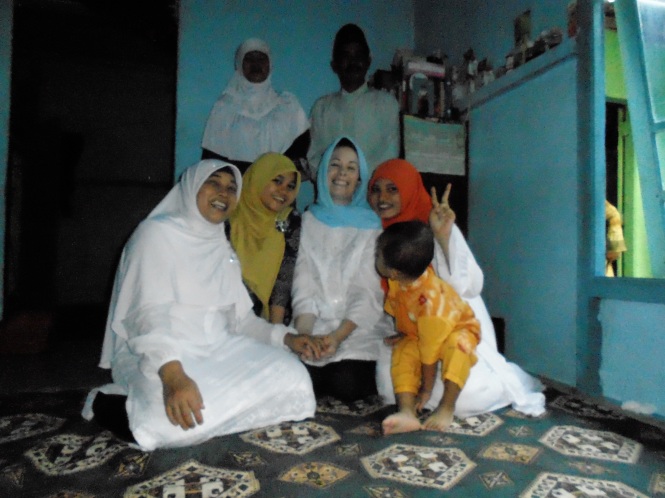
Nono, Nonong (me in a headscarf), Nonong’s cousin and her son – Zachy. Nono is holding my hand in this photo! 🙂
After hanging out at Nono’s house for a little while in the morning, we made our way over to one of the uncles houses. He lived next to the cemetery. The grandmother had died a few years earlier close to Idul Fitri, and a young cousin had died the year before from cancer only a few days before Idul Fitri, so it was, despite being a day of happy celebrations, also a time of sadness for many of the family members. Everyone went to the cemetery and prayed around the graves. I obviously didn’t go, but saw it from afar, and it looked like a truly moving and beautiful thing. When they entered the uncle’s house, there were a number of wet eyes, but this soon changed once the festivities got underway!
It soon became apparent that I was a main attraction! Indonesian people greet each other individually, despite how many people might be present. They also respect their elders in the greeting by bringing the older persons hand up to the forehead. After watching this, I decided, as they had worked so hard to include me in their celebrations, I should also do this. They thought it was hilarious. I’m hoping it wasn’t offensive, but from the reactions, it didn’t seem to be. Again, photo after photo was taken and all of them needed to include me. At anyone time, there seemed to be at least a few camera’s pointed my way, which made it difficult to ensure it was a good photo, but no one seemed to care too much about that…
Even during all of the photo’s being taken, Nono was still trying to feed me…
As we walked around the village, other villagers also wanted their photo taken with me. As humbling as it was, it also became quite overwhelming and exhausting. I am not used to so much attention, and definitely didn’t feel the attention was warranted just because of the colour of my skin and the shape of my nose. There were many occasions where I was told, that black was ugly and white was beautiful, and therefore I was beautiful. I tried my hardest to say that was not the case, that I thought they were beautiful, but this idea of ‘difference’ is so entrenched that it was pointless in the end. It was extremely upsetting to know that such an overwhelming amount of people thought this. Children would stare at my nose, and tell their mothers how beautiful it was. I have always considered my nose to be incredibly ugly – from above it looks like a penis, from front on, something piggish. But they saw it as something different, something unique to noses Indonesians are characterised by, and therefore better. I just couldn’t fathom the idea that a large portion of the nation had this perception of themselves. How had these beliefs come to be? Many had never met a bule, so how could it be, that they automatically perceive me as ‘beautiful’ and somehow better than themselves? It was one of the biggest mind-fucks I’ve ever experienced. There are no words to describe how disillusioning such an experience was. By the afternoon, I felt like I needed to remove myself, and I think Nonong was also aware of this, as I would look over to her, with a pleading look when I was being huddled into another photo.
One of the amazing things about Sami (and other area’s of West Kalimantan) is the abundance of fruit and vegetables that grow – everywhere. From the safety of my porch, there were about 5-7 different types of edible fruit that could be seen. Coconuts, bananas, papaya, pineapples and all this other local fruit that I had never heard of. That afternoon, Nonong and I grabbed a cocoa pod, and went to one of her aunts’ houses 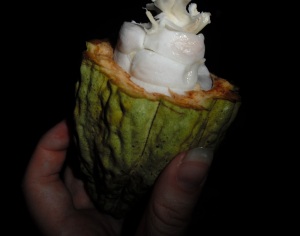 (which wasn’t full of people) and sat and ate the cocoa flesh. It was delicious and sweet! After that, we went to an uncle’s house and had a lie down, away from the festivities and all the cameras. I was thankful that Nonong had the insight to do this.
(which wasn’t full of people) and sat and ate the cocoa flesh. It was delicious and sweet! After that, we went to an uncle’s house and had a lie down, away from the festivities and all the cameras. I was thankful that Nonong had the insight to do this.
Later, we went to the village square where they were holding games for the kids. Rock and spoon race, sack race, musical chairs and a bunch of
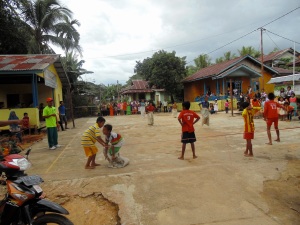
Sack race. I was the champion of this when I was about 7. It’s about wiggling your toes into the corners. I was itching to get in and give them some advice
other activities. I remember these games fondly from when I was a kid, but there seemed to be a lack of rules and regulations around some of them, so many of the kids participating didn’t really know exactly what they were supposed to be doing – but that made it all the more fun to watch.
That evening, we all just chilled out at Nono’s house. There was a family photo album out on the floor, so I had a quick look through it. On the last page was the family photo’s from the day’s celebrations, and there I was, in the family picture, in their family photo album. Again, I felt enormously overwhelmed by the generosity and friendliness of these people that I had just met. I felt so incredibly privileged that they would want to include me so whole-heartedly in their family celebrations, and in their family photo album too.
Next: More Sami, including the Village Fashion Show!

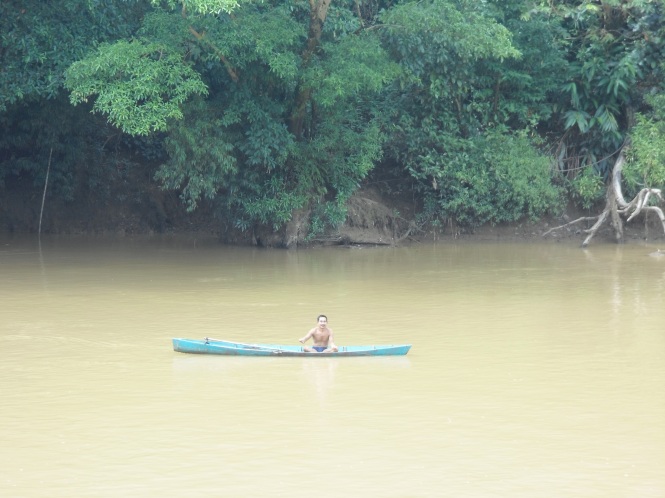
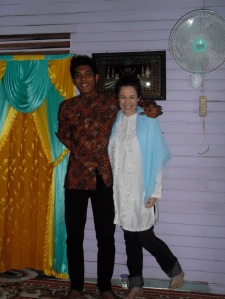
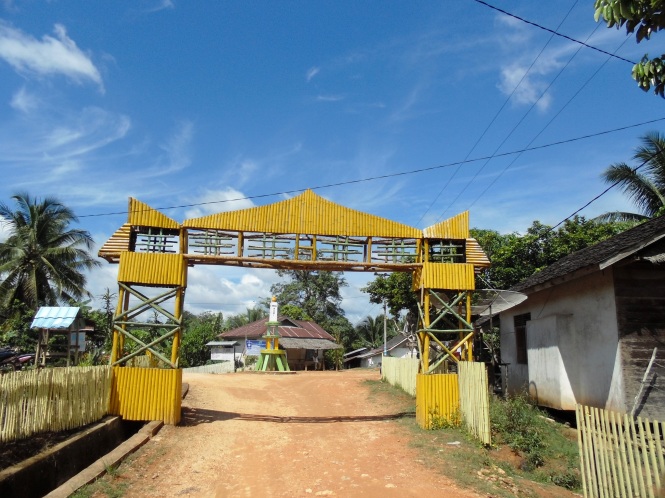
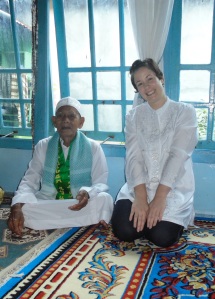
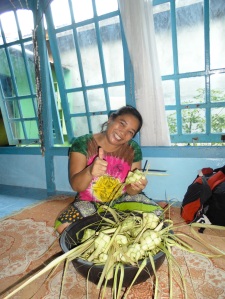
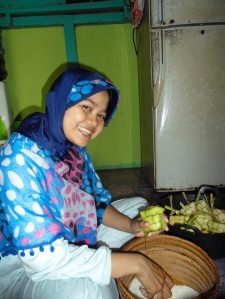
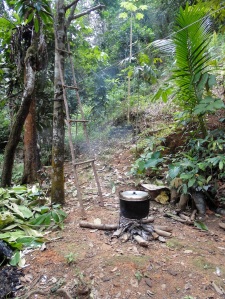
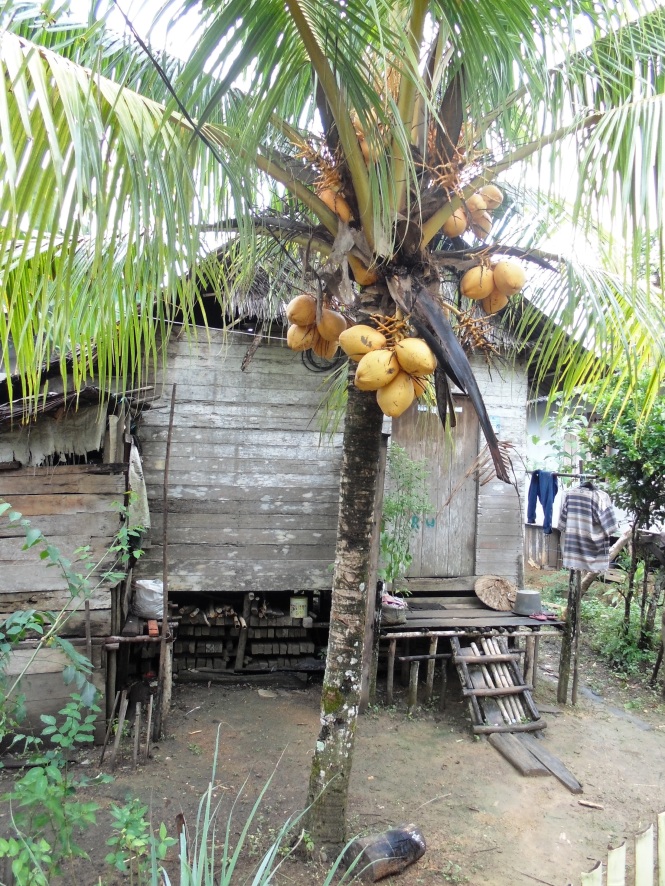
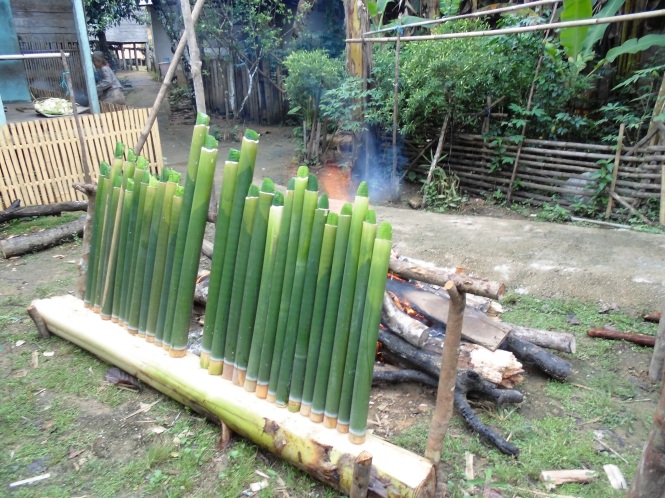
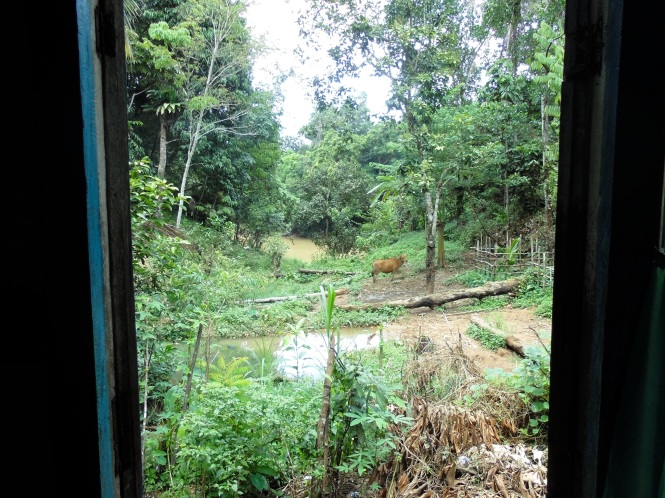
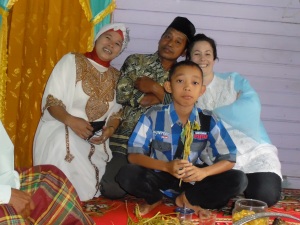
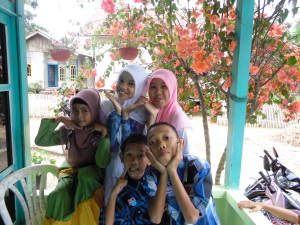
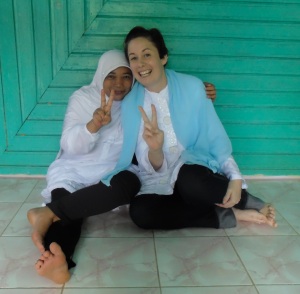
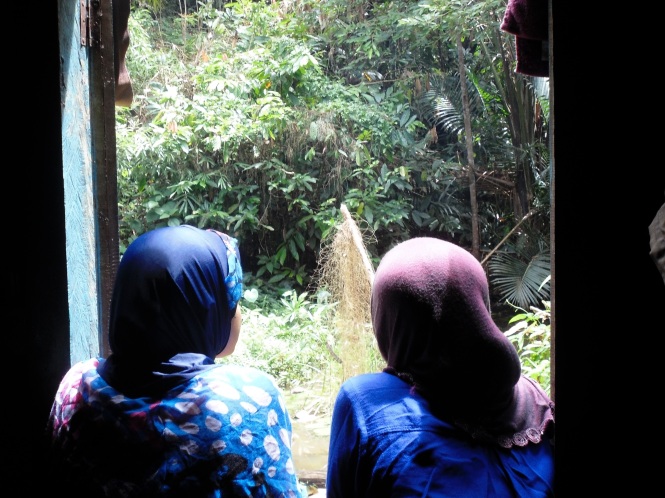
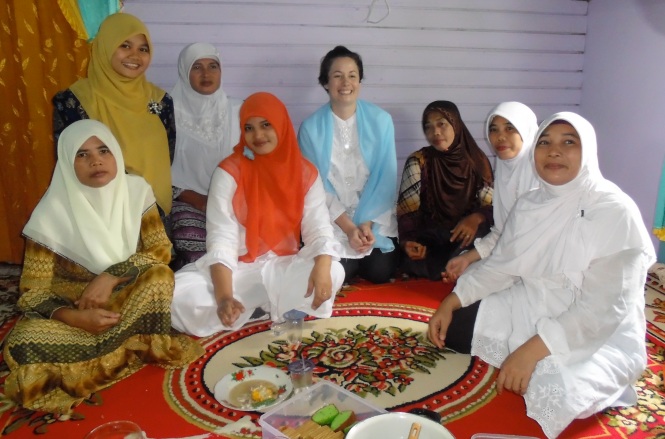
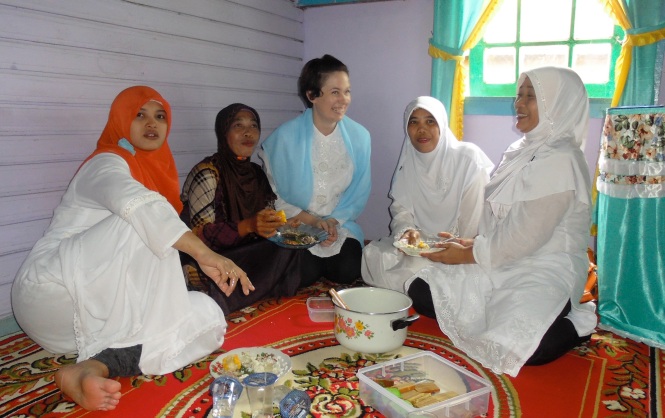
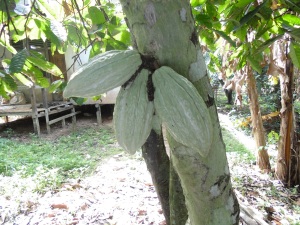
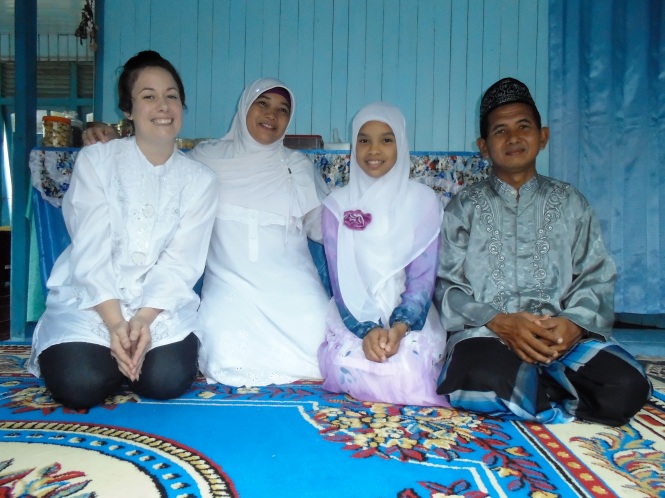
Nice trip. You can describe one of villages in sanggau sistematically
I’m from sanggau
Hi Jaini,
Thank you. I’ve just returned from Sanggau again. Great people! 🙂